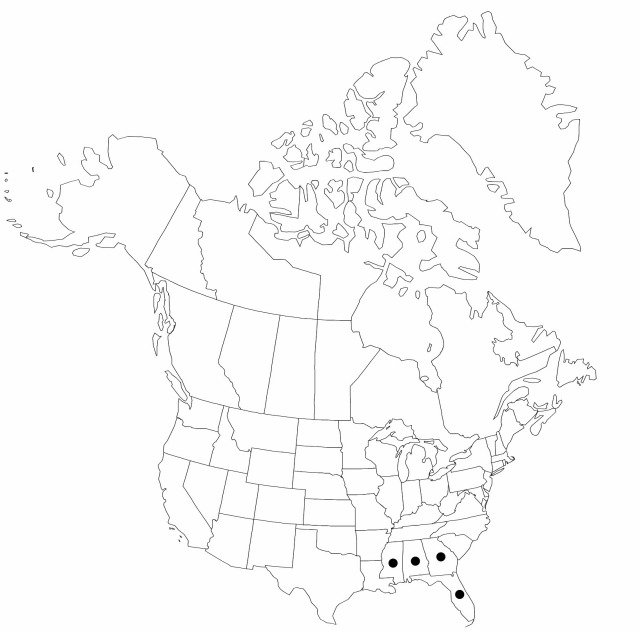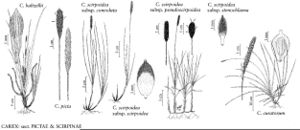Difference between revisions of "Carex baltzellii"
Amer. J. Sci. Arts, ser. 2, 3: 355. 1847.
FNA>Volume Importer |
imported>Volume Importer |
||
| (3 intermediate revisions by 2 users not shown) | |||
| Line 6: | Line 6: | ||
|place=2, 3: 355. 1847 | |place=2, 3: 355. 1847 | ||
|year=1847 | |year=1847 | ||
| + | }} | ||
| + | |special_status={{Treatment/ID/Special_status | ||
| + | |code=F | ||
| + | |label=Illustrated | ||
| + | }}{{Treatment/ID/Special_status | ||
| + | |code=E | ||
| + | |label=Endemic | ||
| + | }}{{Treatment/ID/Special_status | ||
| + | |code=C | ||
| + | |label=Conservation concern | ||
}} | }} | ||
|basionyms= | |basionyms= | ||
| Line 32: | Line 42: | ||
-->{{#Taxon: | -->{{#Taxon: | ||
name=Carex baltzellii | name=Carex baltzellii | ||
| − | |||
|authority=Chapman ex Dewey | |authority=Chapman ex Dewey | ||
|rank=species | |rank=species | ||
| Line 46: | Line 55: | ||
|publication title=Amer. J. Sci. Arts, ser. | |publication title=Amer. J. Sci. Arts, ser. | ||
|publication year=1847 | |publication year=1847 | ||
| − | |special status= | + | |special status=Illustrated;Endemic;Conservation concern |
| − | |source xml=https:// | + | |source xml=https://bitbucket.org/aafc-mbb/fna-data-curation/src/2e0870ddd59836b60bcf96646a41e87ea5a5943a/coarse_grained_fna_xml/V23/V23_1040.xml |
|genus=Carex | |genus=Carex | ||
|section=Carex sect. Pictae | |section=Carex sect. Pictae | ||
Latest revision as of 20:38, 5 November 2020
Culms 15–40 cm. Proximal leaf blades 20–80 cm × 4–8 mm, smooth, glaucous and finely papillose abaxially, green and scabrid adaxially. Inflorescences with staminate and pistillate flowers on same plant; spikes 3–8; lateral spikes pistillate, often with a few staminate flowers at apex, 1–5 basal, 1–2 distal spikes, 15–45 × 4–6 mm; terminal spikes staminate, usually with a few pistillate flowers at base, 10–40 × 2.5–4 mm. Pistillate scales obovate, 4–5.5 × 2–3.5 mm, rounded or emarginate, apex mucronate to awned. Staminate scales oblanceolate to obovate, 4–6 × 1.9–2.6 mm, apex obtuse and mucronate. Perigynia 4–5 × 1–1.5 mm, yellow-green, apex rounded; beak brown, 0.3–0.5 mm.
Phenology: Fruiting spring.
Habitat: Forests
Elevation: 0–100 m
Distribution

Ala., Fla., Ga., Miss.
Discussion
Of conservation concern.
Selected References
None.
